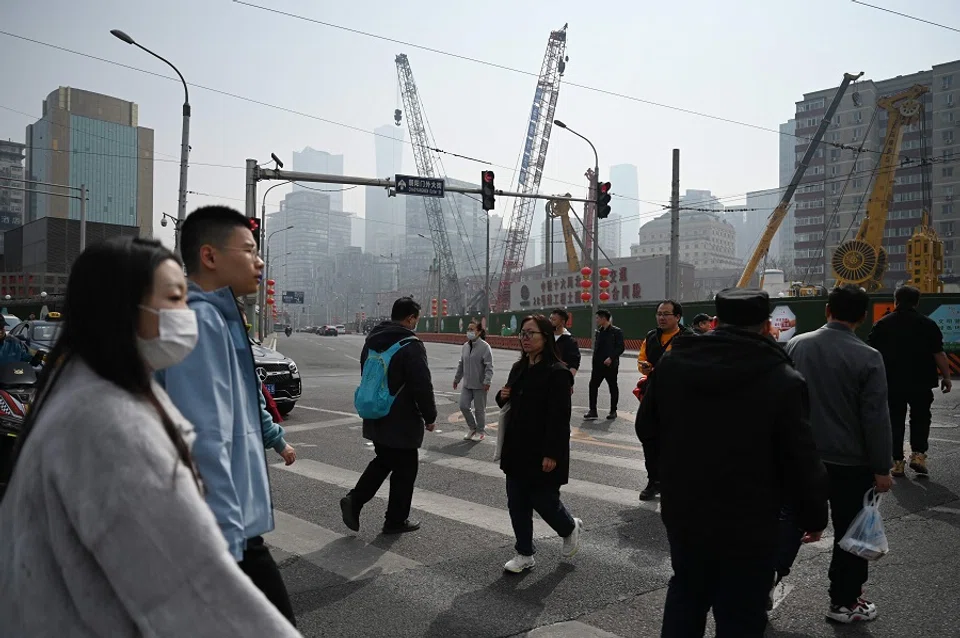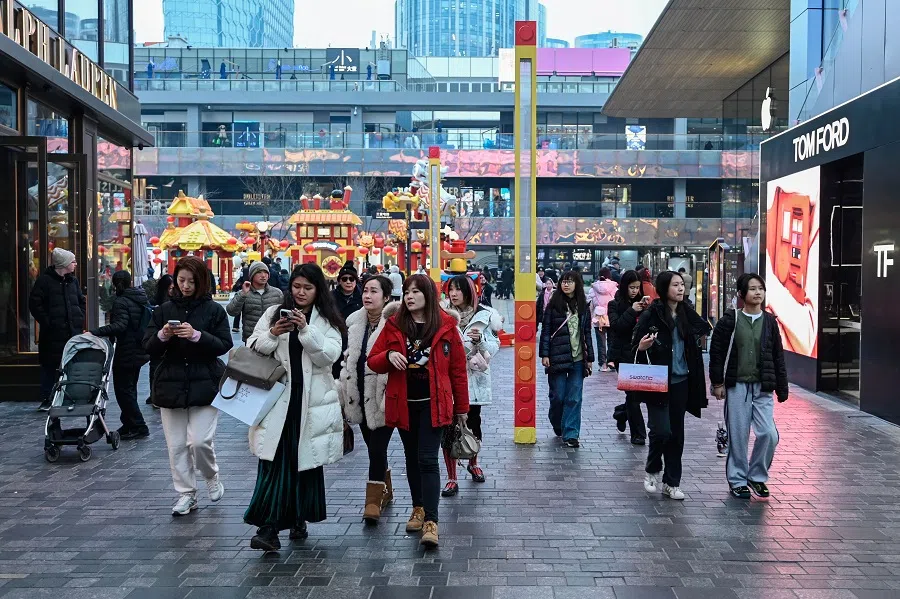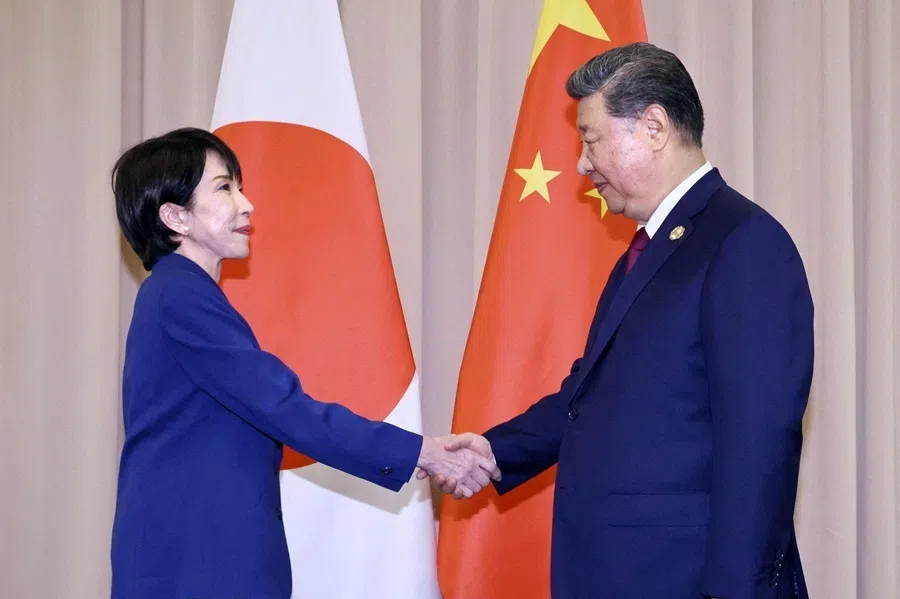Is China falling into the middle-income trap?
While China has enjoyed decades of economic rise, it also risks losing its pace of fast growth, falling into what economists call the middle-income trap. Can China find strategic solutions to navigate its challenges and sustain its economic momentum? Chinese academic Bo Chen examines the issue.

The term "middle-income trap" is used to describe a phenomenon in which an economy loses its momentum of fast growth upon reaching a certain level of income, typically falling within the range of "middle-income" as categorised by the World Bank (hereafter referred to as WB). In fact, according to the WB, middle-income countries form a diverse group in terms of size, population and income level. These countries are home to 75% of the world's population and 62% of the world's poor. However, despite the majority of the world falling into the middle-income range, only a few, such as South Korea and Chile, have successfully escaped this trap since World War II.
Benefiting from significant "reform and opening up" policies, China has transitioned from being one of the least income countries to an upper-middle-income nation in recent times. According to the IMF, China's GDP per capita in 2023 stood at US$13,160, while the upper bound of the middle-income category was US$13,210. However, China's economic miracle appears to be waning, as the previously robust double-digit GDP growth rate has significantly declined to 5.2% in 2023. Although this growth rate still outperforms many countries worldwide, particularly developed ones, there is widespread concern that China may be edging toward the middle-income trap. To address this concern, we must identify the primary reasons for the decelerating growth and assess whether they pose significant challenges.
The root cause lies in the fact that China's labour is no longer cheap and environmental regulations are also being tightened...
Loss of traditional comparative advantages
Essentially, China faces two major challenges. From the supply side, industrial upgrading pressure urges enterprises to upgrade industries and enhance productivity. From the demand side, the transition to a consumption-driven economy requires a shift of focus from investment-led growth to consumption-driven economic activity. China's path forward will require strategic solutions to navigate these challenges and sustain its economic momentum.
China's economy has grappled with the "overcapacity problem" for over a decade. This issue arises when production outpaces demand, both domestically and internationally. The root cause lies in the fact that China's labour is no longer cheap and environmental regulations are also being tightened, such that China has lost its traditional comparative advantages in the world market. China's firms have then turned to outbound foreign direct investment (FDI) which means moving their production capacity to places that still have those comparative advantages. Added to that is the Chinese government's emphasis on industrial upgrading which seeks to move China towards the higher value-added end of the global value chain, which entails shifting its production from traditional industries to high-end manufacturing and high-tech industries in the so-called "knowledge-based economy".
Transitioning to a consumption-backed economy
As for the demand side, China needs to shift its growth mode from an export-led and investment-driven economy to one backed by consumption. While China continues to engage in active public investment and pursue free trade and investment agreements with other nations (such as the Regional Comprehensive Economic Partnership (RCEP)), there is a consensus that exports and investment alone cannot sustain the growth of China's vast economy - not even at a moderate pace. Transitioning to a consumption-backed economy is not only a strategy to absorb the substantial production capacity but also aligns with the experiences of other large developed countries, including the US, Germany and Japan.
China needs to strengthen Intellectual Property Rights (IPR) protection, establish a professional financial market for high-tech investment, create an unimpeded channel for international research and technology cooperation...

Facing the threat of the middle-income trap, several necessary measures are required to help China avoid being ensnared. In other words, whether China will fall into the trap largely depends on the successful implementation of these reform measures.
The importance of improving IPR protection
First and foremost, enhancing innovation and technology is critical for China to develop a knowledge-based economy. The country must transition its industries from low-cost, labour-intensive sectors to high value-added ones. To achieve this goal, China needs to strengthen Intellectual Property Rights (IPR) protection, establish a professional financial market for high-tech investment, create an unimpeded channel for international research and technology cooperation, and cultivate a sufficiently large market for high-tech products.
Despite international pressure and domestic imperatives, China has made substantial progress in IPR protection. Carnegie researchers, Huang and Smith, have highlighted this progress in their 2019 article in Foreign Policy. However, challenges remain. China badly needs a robust financial ecosystem to support high-tech investments. Geopolitical tensions have strained collaboration, making it harder for China to engage in research and technology cooperation with the US and other Western countries. While China has ample public resources for innovation, the debate continues on whether public investment can outperform private investment in professional and risky ventures. Even if it can, public investment alone may not suffice. Given the fierce rivalry between the US and China, creating reliable rules and participating in relevant agreements for governing international research and technology cooperation are crucial. Hence, China is enthusiastic about joining the Digital Economy Partnership Agreement (DEPA) between Singapore, Chile and New Zealand.
China requires another round of grand reforms and liberalisation to unlock its economic growth potential.
Critical to increase the purchasing power of the Chinese
Secondly, boosting domestic consumption involves increasing the purchasing power of citizens and reducing lifetime uncertainties. To achieve this goal, China must address two key aspects. The first is to increase disposable income which requires reforms in China's taxation policies on income. The second is to encourage consumption which is required to strengthen social security and welfare systems so as to reduce the need for excessive household savings for healthcare, education and retirement. While China's government has committed to implementing relevant reforms, data indicates that there is still a considerable distance to cover in significantly elevating the consumption share of GDP. Most major economies boast consumption-GDP shares well above 50%. In contrast, China's share stood only at 37.5% in 2022, according to China's National Statistical Bureau.
Thirdly, China requires another round of grand reforms and liberalisation to unlock its economic growth potential. The country's economic miracle has been marked by three significant events. The establishment of the Shenzhen Special Economic Zone in 1980 led China's initial wave of reforms and liberalisation. The development and opening up of Shanghai Pudong in 1990 was a pivotal moment signalling the second phase. Entry into the World Trade Organization (WTO) in 2001 marked the beginning of the third phase.
Further reforms needed
For sustained progress, China must undertake further reforms, including ease of doing business by simplifying administrative processes, removing trade barriers to engaging in deeper globalisation, reducing market entry obstacles to encourage competition, and enhancing law enforcement to ensure a fair business environment.

Since 2013, China has established 22 provincial-level pilot Free Trade Zones (FTZs), all emphasising the aforementioned reform and liberalisation goals. While some reforms from these zones have been replicated nationwide, they still fall short of constituting a fourth grand round of reforms and liberalisation.
Despite its recent economic growth rate, China is not on the brink of the middle-income trap - not even close. However, effective handling of economic challenges is crucial. If not addressed, persistent economic slowdown could eventually lead to the middle-income trap.





